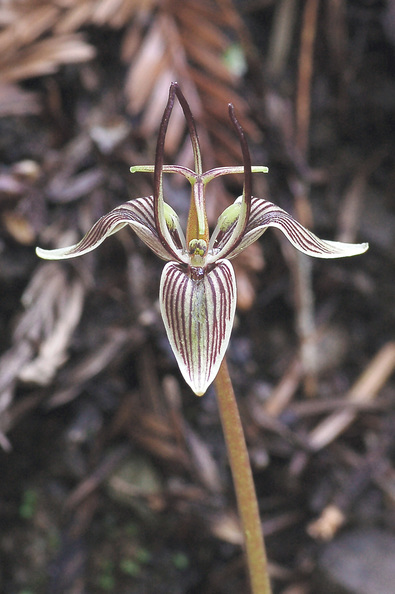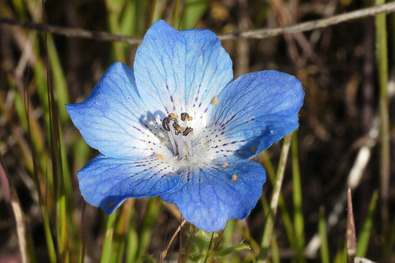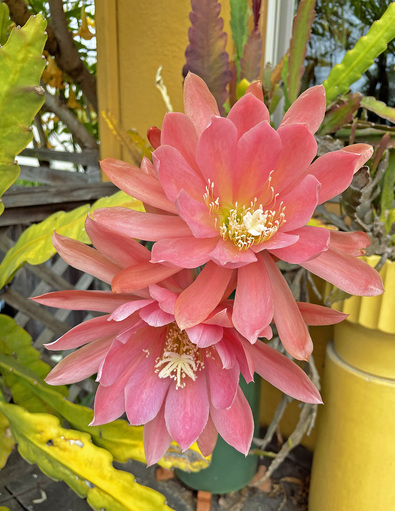January 4, 2023
 A New Year brings new medical developments.
A New Year brings new medical developments.
In my previous blog of December 21, I mentioned two new procedures that have been approved by the FDA and are being used to treat multiple myeloma (as well as some other cancers). CAR-T therapy, and Bispecific antibodies. Little did I know… Within the last few days, I’ve been put on the fast-track to receive CAR-T therapy at Stanford within the next few months. I’ll be going to Stanford soon to discuss the plan of treatment, what to expect and what I need to have in place. All this is a result of how rapidly my cancer has spread as well as my being in a window of eligibility for CAR-T therapy.
Last week, my oncologist Dr. Green showed me a comparison of my PET scan images from April 2022 and from November 2022. In April, there were a few scattered "black spots” on the scan of my skeleton. The black spots are irreversible lesions resulting from the cancer. In November, there were many spots all over my skeleton. Dr. Green was sufficiently alarmed at how rapid the cancer has spread and wants to take action. However, he also reminded me that I have final say over how we proceed.
 My eligibility for CAR-T therapy is based on a couple factors. First, up until very recently, CAR-T therapy has been available only to those myeloma patients who have had at least four or more series of cancer treatments. Generally, the patient is in relapse -- that is, nothing is working. In my case, I’ve had four treatments since 2015 lasting from 1-2 years each. Another eligibility criterion for CAR-T is that my blood work numbers need to be good enough to proceed with the treatment. I remember back in 2017 my stem cell transplant was postponed because my lab numbers weren’t good enough to proceed. Eventually, my numbers became good enough and the transplant went ahead. In the case of CAR-T therapy, however, it’s unlikely that my numbers would improve once they deteriorate – making it crucial to act now rather than wait. If my lab numbers don’t qualify me for CAR-T therapy, the options are very limited since CAR-T therapy can be considered somewhat of a last resort. There is also consideration given my age and overall health for how well I can be expected to withstand what could be a fairly grueling procedure. I'm trying to keep up with exercise, hiking and water aerobics to stay in-shape for what might be coming. I'm also dealing with jaw osteonecrosis. Right now, I'm taking Tylenol or Norco several times a day to deal with the pain. Unfortunately, there's not a lot to be done other than surgery which would risk complications that might make the situation worse. Not only that, but surgery would likely compromise my eligibility for CAR-T therapy. The oral surgeon thought there's a chance it would resolve on its own.
My eligibility for CAR-T therapy is based on a couple factors. First, up until very recently, CAR-T therapy has been available only to those myeloma patients who have had at least four or more series of cancer treatments. Generally, the patient is in relapse -- that is, nothing is working. In my case, I’ve had four treatments since 2015 lasting from 1-2 years each. Another eligibility criterion for CAR-T is that my blood work numbers need to be good enough to proceed with the treatment. I remember back in 2017 my stem cell transplant was postponed because my lab numbers weren’t good enough to proceed. Eventually, my numbers became good enough and the transplant went ahead. In the case of CAR-T therapy, however, it’s unlikely that my numbers would improve once they deteriorate – making it crucial to act now rather than wait. If my lab numbers don’t qualify me for CAR-T therapy, the options are very limited since CAR-T therapy can be considered somewhat of a last resort. There is also consideration given my age and overall health for how well I can be expected to withstand what could be a fairly grueling procedure. I'm trying to keep up with exercise, hiking and water aerobics to stay in-shape for what might be coming. I'm also dealing with jaw osteonecrosis. Right now, I'm taking Tylenol or Norco several times a day to deal with the pain. Unfortunately, there's not a lot to be done other than surgery which would risk complications that might make the situation worse. Not only that, but surgery would likely compromise my eligibility for CAR-T therapy. The oral surgeon thought there's a chance it would resolve on its own.
 Basically, in CAR-T therapy, they extract my T-cells, bioengineer them to become cancer-fighting T-cells, then introduce these modified T-cells back into me. This newly approved procedure happens over 3-4 months, at least some of them while I’m hospitalized for 2-4 weeks at Stanford as well as intermittent trips to Stanford while they’re monitoring me at home. Hospitalization is required because of the high risk of cytokine release syndrome (among other nasty side-effects). That results in acute systemic inflammation, fever and multiple organ dysfunction which needs to be treated immediately. There are at least 4 months of potentially serious and ongoing side-effects which require either hospitalization or close monitoring. Following that, a year of isolation and ongoing monitoring by Kaiser and by Stanford.
Basically, in CAR-T therapy, they extract my T-cells, bioengineer them to become cancer-fighting T-cells, then introduce these modified T-cells back into me. This newly approved procedure happens over 3-4 months, at least some of them while I’m hospitalized for 2-4 weeks at Stanford as well as intermittent trips to Stanford while they’re monitoring me at home. Hospitalization is required because of the high risk of cytokine release syndrome (among other nasty side-effects). That results in acute systemic inflammation, fever and multiple organ dysfunction which needs to be treated immediately. There are at least 4 months of potentially serious and ongoing side-effects which require either hospitalization or close monitoring. Following that, a year of isolation and ongoing monitoring by Kaiser and by Stanford.
I debated whether I want to go through all this. My other option is to refuse further treatment. Right now, the new regimen I just started might make a dent in the cancer, but it's not enough. So, at least as of today, I’m going to give the CAR-T a shot. My oncology nurse yesterday told me that the patients she's seen do so well on CAR-T therapy that they no longer need to come in for infusions. (She did add that they did have to go through a few difficult months initially.) I don’t know how quickly things will happen but, according to my oncologist, it’s “soon.” As long as my lab current numbers make me eligible for this CAR-T treatment, I’m planning to go through with it. However, the longer I wait will likely decrease my eligibility for this procedure. Then, I’m possibly stuck with no current treatment that could work -- although each year there are a slew of new drugs that target multiple myeloma.
 In case you’re wondering… The other new treatment that might have been considered is Bispecific antibodies. This has an advantage in that it’s an injection or infusion that’s readily available (i.e., does not need 2+ months to be bioengineered like in CAR-T). But, the disadvantage is that I’d need to get this treatment on a weekly basis for the rest of my life. As of today, that injection can only happen at an academic hospital setting like Stanford or UCSF, not Kaiser. So, I’d need to be going back and forth to get the shot every week. CAR-T therapy is a one shot deal – that is, if successful, I wouldn’t need another treatment. The success rate for both CAR-T and bispecific is comparable: 70% success rate. “Success” includes a continuum of slowing the cancer to nearly eradicating it. There is still no "cure" for multiple myeloma. The risk of cytokine release syndrome and other side-effects is similar for both procedures. Because these two treatments are new, there’s not a lot of long-term data to know how long either treatment will last. So far, the research shows that CAR-T has a longer duration than Bispecific antibodies in which the duration of response isn't clear.
In case you’re wondering… The other new treatment that might have been considered is Bispecific antibodies. This has an advantage in that it’s an injection or infusion that’s readily available (i.e., does not need 2+ months to be bioengineered like in CAR-T). But, the disadvantage is that I’d need to get this treatment on a weekly basis for the rest of my life. As of today, that injection can only happen at an academic hospital setting like Stanford or UCSF, not Kaiser. So, I’d need to be going back and forth to get the shot every week. CAR-T therapy is a one shot deal – that is, if successful, I wouldn’t need another treatment. The success rate for both CAR-T and bispecific is comparable: 70% success rate. “Success” includes a continuum of slowing the cancer to nearly eradicating it. There is still no "cure" for multiple myeloma. The risk of cytokine release syndrome and other side-effects is similar for both procedures. Because these two treatments are new, there’s not a lot of long-term data to know how long either treatment will last. So far, the research shows that CAR-T has a longer duration than Bispecific antibodies in which the duration of response isn't clear.
I'm still waiting to get my second opinion from UCSF, but there is a hang-up as far as them getting my records from Kaiser. That said, it's very likely that UCSF would advocate for CAR-T therapy if not encouraging me to get into a clinical trial. At this point, I'm not inclined to pursue clinical trials as long as the possibility of CAR-T is a viable option for me.
 What all this means on a daily and practical level is that I need to continue being very strict about keeping myself safe because my immune system is precarious right now. That is, no socializing indoors (even with masks) since the risk of COVID, flu or other viruses would pretty much knock me out of contention for the CAR-T therapy. It's so hard to know where the circle of someone's contacts begins and ends, so I'd rather play it safe even if it means less getting together with folks. There's always Zoom or FaceTime. If my window of opportunity for CAR-T closes, there aren’t many other options at this point that are promising.
What all this means on a daily and practical level is that I need to continue being very strict about keeping myself safe because my immune system is precarious right now. That is, no socializing indoors (even with masks) since the risk of COVID, flu or other viruses would pretty much knock me out of contention for the CAR-T therapy. It's so hard to know where the circle of someone's contacts begins and ends, so I'd rather play it safe even if it means less getting together with folks. There's always Zoom or FaceTime. If my window of opportunity for CAR-T closes, there aren’t many other options at this point that are promising.
Depending on how well I do, I may be discharged from the hospital to home, or I may need to stay close to Stanford for several weeks or months. When I had my stem cell transplant in 2017, Tim and I rented a nearby apartment that was coordinated through Stanford. I don’t know if I’ll have to make similar arrangements this time around. I know a number of myeloma patients who've gone through stem cell transplants or CAR-T therapy at Stanford and may have suggestions for lodging arrangements. I also have the option of using my long term care policy.
The holidays brought a ton of cards, phone calls and texts from friends and family near and far. It also brought many goodies which I'm slowly making my way through. Unfortunately, my recent food restrictions have hampered my ability to enjoy all these treats. But, I've managed to share them with others.
 Finally, today January 4 would have been Tim’s 75th birthday. Tim saw me through my stem cell transplant back in 2017. This time, I’m facing the challenge alone. I know I have the support and assistance of many local friends. But, on a practical level, it may be that I need consistent and daily assistance depending on how things go. I’d like to think I can handle it all on my own, but that may be unrealistic. Having friends come over or staying with them isn't so workable since I need to be in isolation. Tim worked very hard to keep me safe during my transplant, including wearing "inside shoes" and "outside" shoes. One of the things that all the research and the myeloma experts underscore is that this disease is highly variable in the symptoms and treatment outcomes. It's hard to predict where this New Year will go. Nevertheless, I'm gearing up for the challenge.
Finally, today January 4 would have been Tim’s 75th birthday. Tim saw me through my stem cell transplant back in 2017. This time, I’m facing the challenge alone. I know I have the support and assistance of many local friends. But, on a practical level, it may be that I need consistent and daily assistance depending on how things go. I’d like to think I can handle it all on my own, but that may be unrealistic. Having friends come over or staying with them isn't so workable since I need to be in isolation. Tim worked very hard to keep me safe during my transplant, including wearing "inside shoes" and "outside" shoes. One of the things that all the research and the myeloma experts underscore is that this disease is highly variable in the symptoms and treatment outcomes. It's hard to predict where this New Year will go. Nevertheless, I'm gearing up for the challenge.
A very big hug and a Happy 2023 to everyone!
A few flower shots from over the years: Caper Plant (Capparis sandwichiana) from Maui, Hawaii; Beardtongue (Penstemmon palmeri) from Los Cerrillos, New Mexico; Alpine Columbine (Aquilegia pubescens) from Lassen National Park; Fetid Adder's Tongue (Scoliopus bigelovii) from Muir Woods; Baby Blue Eyes (Nemophila menziesii var. menziesii) from Mount Diablo; and, Orchid Cactus (Epiphyllum sp) from my deck
News and Updates from Paul
